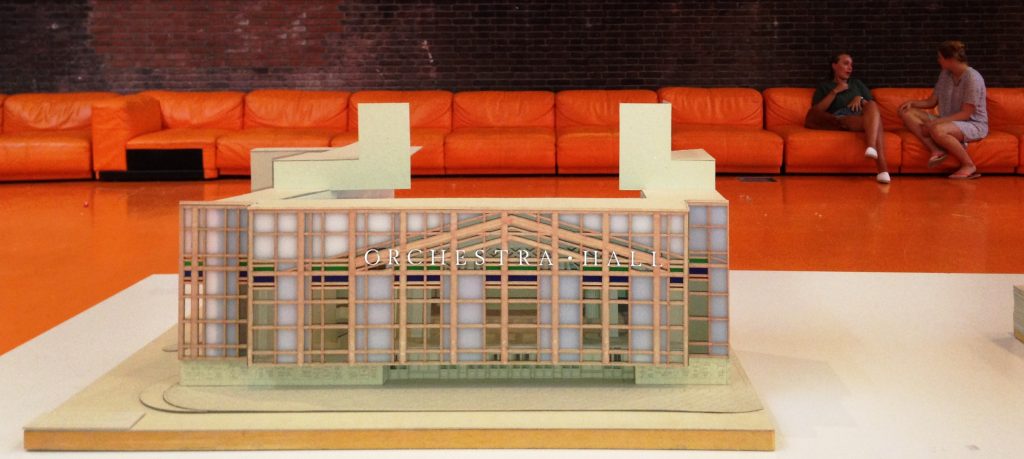Today, Denise Scott Brown will discuss her view on women in architecture during a Skype video conference.
Available online: Follow this link.


Today, Denise Scott Brown will discuss her view on women in architecture during a Skype video conference.
Available online: Follow this link.

Alejandro Aravena of Chile has been selected as the 2016 Pritzker Architecture Prize Laureate. It is promising to see how Pritzker is opening-up to a next generation, by emphasising again social responsibility of designers and the design of human habitat and the city. Mr. Pritzker said today, “Innovative and inspiring, he shows how architecture at its best can improve people’s lives.” With this, the current jury re-acknowledged the importance of “human behavior” in design (as stated before in the jury citation of 1990, with Aldo Rossi as laureate) and “significant contributions to humanity through the art of architecture” (cited in 1991, with Robert Venturi as laureate, while jury forgot to award Denise Scott Brown too). …In response to being named the laureate, Mr. Aravena emailed: “No achievement is individual. Architecture is a collective discipline. So we think, with gratitude, of all the people who contributed to give form to a huge diversity of forces at play.” Happy to hear! More to come, for sure…
The proposed redesigns for Benjamin Franklin Life & Legacy Museum as situated in Philadelphia’s Independence National Historical Park have been quite worrisome.
As an architect, urban designer and academician, I have been grateful for the request for input by of the U.S. National Park Service. It is an great acknowledgement of the public importance of this particular place in society and city, in the State, the Nation and beyond. Franklin Court, including its museum, is situated just off Philadelphia’s Independence Mall and, as we all know, it symbolises 1776 likewise. In retrospective, it is a crucial part of the final stages of a project presented in the built-up to the sesquicentennial of the American Independence.
Given the changing characteristics of public and private urban spaces, the lecture covers a wide range of city-related topics following a two-folded target. As urban space represents the interface of communication and urban investigations, it is crucial to bring participants nearer to the concept of it, including crossing boundaries. The second part of the lecture block will deal with the role of urban planning in shaping urban space following its redefinition. With this insight, participants would understand the role of urban space and the formal ways of planning it.
In the city today, we meet in public atria and shop in malls, we move along covered walkways and go from street to street by taking shortcuts through the buildings of a city block. In recent decades, the amount and proportion of public space within urban buildings has steadily increased, with much of it forming part of a larger interior and exterior pedestrian network. Yet, although interior public space has become an important constituent of the contemporary city and of our urban experience, it is rarely designed as such. Prompted by this disconnection, Maurice Harteveld has followed different leads to examine contemporary urban design in relation to public interiors. Through this research, he has documented in particular the urban analyses and architectural designs of Robert Venturi and Denise Scott Brown, in which interior public space is accorded significant and multiple roles. Ideas pioneered by Venturi and Scott Brown have become absorbed within architectural practice, notably their use of the Nolli Map introduced in their 1972 study of Las Vegas. Similarly, the concept of the ‘rue interieur’ seen in their earliest projects, has matured in their later work to include an internal street imbedded in a network of urban public spaces and pathways, both interior and exterior. However, although they refer to interior public space frequently in their writing, Venturi and Scott Brown have yet to describe their views on it in any great detail; a more focused examination that the following dialogue between Maurice Harteveld and Denise Scott Brown seeks to provide.
In explorations of the notions of public space, public interiors are generally seen as undemocratic and more private spaces. This is based on the Roman distinction between publicus and privatus, but making public space, as a public case, refer primarily to res publica. – On the other hand, there is a related Roman public law that deals with the common interest of urban society, and could include cases of interior public space. Most sociological research in contemporary daily life reveals these spaces as public. For urbanism, this research can be seen as the social context, because the urbanist is primarily focused on the city: the civitas, and not the whole societas. More specifically, for urban designers who deal with public space, it traditionally means focusing on the outdoor space, and although this is almost always synonymous with the public domain or publicly owned space, I believe that public space can be more than this. For urbanism this means there is a need for new understanding and an extension of the design task..